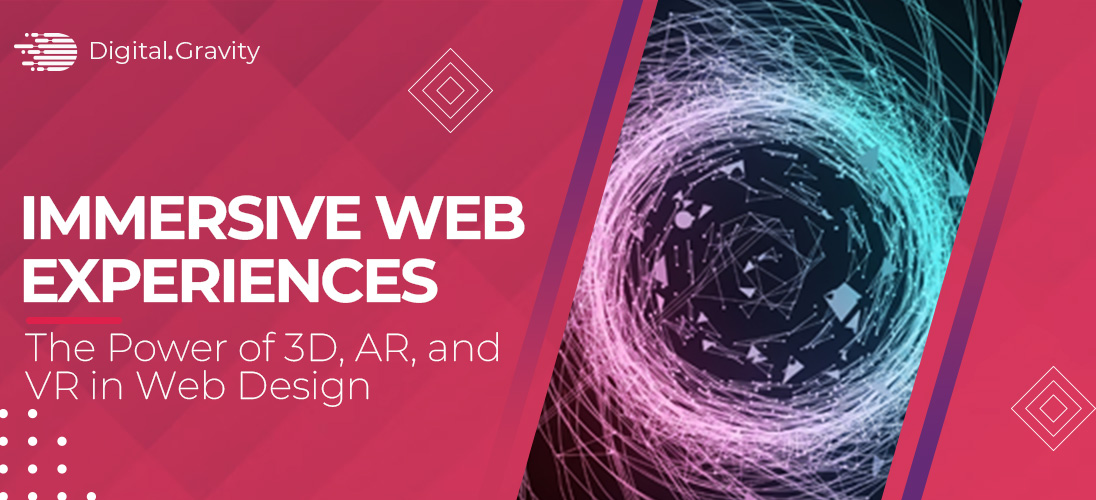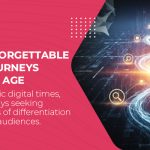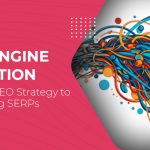Key Takeaways
- Web design is being revamped by immersive technologies such as 3D, AR (Augmented Reality) and VR (Virtual Reality) with deeper engagements and remarkable experiences.
- These tools allow the users to experience websites in a more natural manner and to navigate through products, environments and contents in a manner that other static pages cannot offer.
- The combination of 3D models, AR try-ons, and VR tours enhances conversion, brand differentiation, and satisfaction of the users.
- With the maturity of the technology, intelligent application of immersive design can be used to improve the storytelling, usability, and accessibility yet performance-sensitive.
- The most successful websites in 2025 are sleek, easy to navigate, and immersive in terms of technology, as they have to suit the needs of the current users.
The Emergence of the Immersive Web Design
Do you remember the times when the Internet was nothing but text and preloaded pictures? The web today is like a digital world you enter into (rather than clicking around). With the help of such technology as 3D modeling, augmented reality (AR), and virtual reality (VR), designers are able to create websites that encourage the visitor to have a look at the products in 3D, use items virtually in their surroundings, or enjoy an immersion tour regardless of where they are located in the world.
The immersive web offers something new and exciting in the way brands talk to each other through the internet by merging interaction, aesthetics and utility.
So, why 3D, AR, and VR are natural extensions of web design, what are the feasible examples of their implementation, and how to get started to provide users with immersive experiences.
The Reason 3D, AR & VR are Important to Modern Websites
1. Making Users More Than Pixels and Scrolls
Websites become alive because of immersive technologies. Users will no longer be mere observers; they will interact with products, putting virtual furniture in their rooms with the help of AR, or even walking around a VR gallery.
This communication enhances attention level, emotional bonding and trust. Current research indicates that immersive shopping experiences with conversion rates of up to 30 percent, low returns and brand loyalty might emerge.
2. Acquiring the Demands of a Tech-Savvy Audience
The current visitors to the web demand more than the fixed content, and the younger generation such as Gen Z and millennials expect more than just the content. They like interactive media which is easy to use, compatible with mobile devices and even fun. AR and 3D exceed these expectations, in particular, on retail, education, real estate, and entertainment websites.
3. Differentiating Your Brand by Special Experiences
In the saturated markets, it is difficult to make a splash. An immersive web design allows demonstrating the innovation and creativity of your business, and people are likely to remember you. Consider virtual glasses or clothes fittings or online showrooms where people browse architecture designs or car models in three dimensions.
Important Technologies Defined
1. 3D Web Design
3D web design is the ability to insert real-time 3D models and animations in Web sites with WebGL and other frameworks such as Three.js and Babylon.js. As opposed to static images, 3D enables the user to traverse the shape of an object in various directions, zoom, and to move dynamically.
Example: The Tint Car 3D Workshop site utilizes 3D renders to allow the user to customize the car wrap of his or her choice and render the changes in real-time, a fun and interactive process with a real-life product application.
2. Augmented Reality (AR)
AR superimposes digital images on the actual world through smart glass or smartphone cameras. By allowing use of AR experiences in browsers rather than requiring downloads, Web AR is more accessible.
Illustration: The AR app IKEA Place allows customers to see how furniture would look in their living room, to scale, and in real-time. The web-based versions of AR begin to emerge, delivering such experiences through the site.
3. Virtual Reality (VR)
VR makes their users be totally immersed in the digital world and this is usually through headsets. WebVR takes it further into the browser so that VR can be experienced without additional software.
Example: A tourism app could offer a VR tour of the historic site of Al-Ula. Users could navigate through the ancient ruins of Hegra, explore the stunning rock formations, and view historical artifacts up close, all from their web browser. This combines cultural education with an immersive brand story for a tourism-related app.
The Effective Use of 3D, AR & VR in Web design
1. Emphasis on usability and performance
Immersive technology may be resource intensive. Performance-based design:
- Optimize the 3D models used and have efficient polygon count.
- Make progressive loading possible so that the site will be responsive.
- Focus on mobile experiences by optimizing visuals to smaller size screens.
- Provide alternative options to devices/browsers that are not compatible with AR/VR.
2. Interactive Story Telling
Good, story-based 3D and AR/VR is not about glitzy technology. Show the users the way, provide hints, stories, and hotspots that provide information on features or advantages without overwhelming.
3. Perfectly Fit into UI Design
Immersive aspects must not be confusing. Make sure that navigation is not confusing, calls-to-action are noticeable, and AR/VR displays do not cover important information.
4. Harness Immersive Tools to E-Commerce and Learning
E-Commerce: Employ 3D product viewers and AR try-ons in order to minimise uncertainty and returns.
- Education: Conduct VR tours, 3D models, and AR overlays to describe complicated notions in detail.
- Real Estate: Provide virtual tours and 3D floor plans.
FAQs
1. What is the distinction between 3D, AR and VR in web design?
3D provides interactive models on a web page; AR places digital information on top of the real world using a camera; VR puts you inside a digital world, often through headsets.
2. Is it possible to use immersive web design with mobile devices?
Indeed, more so with AR using mobile cameras and streamlined 3D models. VR is difficult, but improving with the lighter WebVR experiences.
3. What is the role of immersive experiences in SEO of websites?
Engagement, time on site and shares are all good SEO signals that immersive content can drive. When applied correctly they can help your site to be noticed in search and social media.
4. Is 3D, AR, or VR on a site costly to implement?
Budgets are quite high and are very high. Employment of frameworks and templates and work on essential interactive aspects can help to keep the costs down.
5. What are the first steps to putting immersive content on my current site?
Start with basic 3D product viewer or AR try-ons through plugins or third party providers. Incrementally scale on a user response and business objective.
Conclusion
The 2025 web design is not only limited to the visuals on a 2D screen anymore but to some innovative tech such as 3D, AR, and VR technologies that help to create engaging, interactive, and immersive experiences. The brands that incorporate the technologies wisely will be the ones to shine, as they will provide the visitors with richer and more meaningful digital experiences, maximizing the engagement, developing trust, and making sales.
The strength of 3D, AR, and VR in web design is changing the digital world into a really memorable and immersive one. In the hands of a considerate mind, these technologies usher in users to engage with your brand in a more profound way, where passive visits turn into all-in experiences. The year 2025 is not the time to go immersive and gawk at how cool it is, it is a tactical move to keep up with the increasing demands of the user and stand out in an already saturated digital world.
Begin with a few pages, concentrate on usability and be adventurous, your next great web experience is out there!







